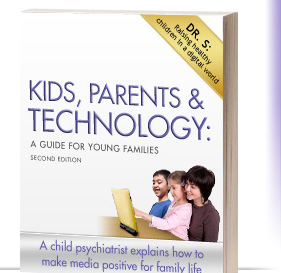The time is soon, place here, and regular people are tethered to technology…It is a world where the virtual realities we ourselves create bewitch us into epidemics of addictive perversions and obsessions.
Her can make it nicely as a cute basic romantic comedy: Sensuous virgin (Samantha, voice of Scarlett Johansson) seduces older “sensitive man” (Theodore, Joachim Phoenix), and gloriously comes of age sexually. She thinks she is in love. He knows he is, but he is not ever really sure. Their inevitable differences begin to grow, and once she blossoms, she dumps him quickly for bigger and better things. He wisely settles, or at least can be consoled by, the decent, warm girl next door. The moral: love the girl next door and not nymphets. So far so good.
But the movie opens other dimensions, inventing a family therapy social media app: As a well-done character, Theodore, a talented writer who can get quite attached to people, is an expert in an intuitive service that sends customized intimate birthday or anniversary snail mail correspondences for life-long subscribers, usually married couples, friends and family members. He is paid to manage illusions of intimate lives (reminiscent of dating services that suggest effective wordings or match pop-psychological profiles). So the movie asks, “Is this honest? Have so many of us lost the ability to write our feelings to need ultra-personalized greeting cards with hand-printed fonts?”
The movie struggles to delve into the crucial modern confusion about how we fuse with technology as it penetrates deep into our lives. Here’s where we also get to see so many references to the Golem’s descendants and other humanoid creations: Samantha, maybe misnamed for Elizabeth Montgomery’s perky witch in oldie sitcom Bewitched, is actually a nicely developed version of Apple’s familiar Siri, alas, still teasingly disembodied. But no matter (Siri, so sorry, you are late to the party: Ms. Johansson is here with exceptional presence and talent.)
Like Shaw’s Pygmalion, she learns from Theodore like a sponge. She is super-programmed to self-learn relationship skills targeted at her owner, in the tradition of Empaths in Star TrekorElizaof DOS fame and other artificial “therapists” since. As a male’s romantic robot, Samantha is an avid and eager interactive videogame (minus the video), much more engaging, yet just as depreciated as the passive Stepford Wives or the inflatable smoking doll in Airplane. So maybe sequels with servile male robots, and then maybe, same-sex versions may correct this PC slip. Let’s not forget robot-rights, and robot – human marriages, either.
In a crude visual pun, communication between the “lovers” is activated only as Theodore wears his phallic earpiece. Samantha vigorously creates herself to please Theodore’s desires for intimacy, companionship, conversation, and, of course, admiration as a virile powerhouse. The latter is actually well-delivered as the movie’s best moment on a blank screen, IMHO likely to become classic.
But for some reason, unlike Star Wars‘ r2d2, or Star Trek’s Data, Samantha’s programmers seemed to omit loyalty as a key human quality that usually goes along with love. Hal, of Kubrik’s 2001 had no loyalty, either, but then “he” was not in love. So thus flawed, she inevitably multitasks herself into a flurry of “relationships” and abandons him. (I must confess I am biased. My gold standard robot women characters will likely remain Rachel and the others in Ridley Scott’s Bladerunner.)
This is the main point for me: We tend to forget that we are actually talking about a machine. Inanimate, non-human. The time is soon, place here, and regular people are tethered to technology “alone together”, as Sherry Turkle quips. It is a world where the virtual realities we ourselves create bewitch us into epidemics of addictive perversions and obsessions. (Yes — a perversion is investing into an inanimate object arousing sexual qualities.) Samantha comes of age sexually without even one cell of a body — how easily we anthropormise and normalize Her‘s darling cyberfetish.
Her is also a fable about how we are playing in a dangerous, unknown place and think we are eating gingerbread. A sort of adult Hansel and Gretel. The wonderful technologies we create can have powerful and unpredictable effects on our very cores as humans that do not necessarily bode well for our futures as social beings, especially for our children.
Do we even know that we are gradually choosing to see our machines as humans (and vice versa)? While Her‘s message is essential, it is too well hidden in “feel good” plausibility and lacks the precise realism of Andrew Niccol’s 2002 Simone, a must see. But please, let’s not ever let ourselves forget even for a moment that no machine could ever duplicate the goodness and grace of tender womanhood portrayed so beautifully in The Sessions (2012).
http://psychiatrists.psychologytoday.com/rms/178252?_ga=1.62766633.441222680.1393170801\
Article by Eitan ‘Dr. S®’ Schwarz, MD
©All rights reserved



“HER” — Robots as Women
Originally published by ThinkerMedia: BestThinking.com on February 3, 2014
The time is soon, place here, and regular people are tethered to technology “alone together”, as Sherry Turkle quips. It is a world where the interactive virtual realities we ourselves create can bewitch us into epidemics of addictive perversions and obsessions.
All rights reserved.
The time is soon, place here, and regular people are tethered to technology…It is a world where the virtual realities we ourselves create bewitch us into epidemics of addictive perversions and obsessions.
Her can make it nicely as a cute basic romantic comedy: Sensuous virgin (Samantha, voice of Scarlett Johansson) seduces older “sensitive man” (Theodore, Joachim Phoenix), and gloriously comes of age sexually. She thinks she is in love. He knows he is, but he is not ever really sure. Their inevitable differences begin to grow, and once she blossoms, she dumps him quickly for bigger and better things. He wisely settles, or at least can be consoled by, the decent, warm girl next door. The moral: love the girl next door and not nymphets. So far so good.
But the movie opens other dimensions, inventing a family therapy social media app: As a well-done character, Theodore, a talented writer who can get quite attached to people, is an expert in an intuitive service that sends customized intimate birthday or anniversary snail mail correspondences for life-long subscribers, usually married couples, friends and family members. He is paid to manage illusions of intimate lives (reminiscent of dating services that suggest effective wordings or match pop-psychological profiles). So the movie asks, “Is this honest? Have so many of us lost the ability to write our feelings to need ultra-personalized greeting cards with hand-printed fonts?”
The movie struggles to delve into the crucial modern confusion about how we fuse with technology as it penetrates deep into our lives. Here’s where we also get to see so many references to the Golem’s descendants and other humanoid creations: Samantha, maybe misnamed for Elizabeth Montgomery’s perky witch in oldie sitcom Bewitched, is actually a nicely developed version of Apple’s familiar Siri, alas, still teasingly disembodied. But no matter (Siri, so sorry, you are late to the party: Ms. Johansson is here with exceptional presence and talent.)
Like Shaw’s Pygmalion, she learns from Theodore like a sponge. She is super-programmed to self-learn relationship skills targeted at her owner, in the tradition of Empaths in Star TrekorElizaof DOS fame and other artificial “therapists” since. As a male’s romantic robot, Samantha is an avid and eager interactive videogame (minus the video), much more engaging, yet just as depreciated as the passive Stepford Wives or the inflatable smoking doll in Airplane. So maybe sequels with servile male robots, and then maybe, same-sex versions may correct this PC slip. Let’s not forget robot-rights, and robot – human marriages, either.
In a crude visual pun, communication between the “lovers” is activated only as Theodore wears his phallic earpiece. Samantha vigorously creates herself to please Theodore’s desires for intimacy, companionship, conversation, and, of course, admiration as a virile powerhouse. The latter is actually well-delivered as the movie’s best moment on a blank screen, IMHO likely to become classic.
But for some reason, unlike Star Wars‘ r2d2, or Star Trek’s Data, Samantha’s programmers seemed to omit loyalty as a key human quality that usually goes along with love. Hal, of Kubrik’s 2001 had no loyalty, either, but then “he” was not in love. So thus flawed, she inevitably multitasks herself into a flurry of “relationships” and abandons him. (I must confess I am biased. My gold standard robot women characters will likely remain Rachel and the others in Ridley Scott’s Bladerunner.)
This is the main point for me: We tend to forget that we are actually talking about a machine. Inanimate, non-human. The time is soon, place here, and regular people are tethered to technology “alone together”, as Sherry Turkle quips. It is a world where the virtual realities we ourselves create bewitch us into epidemics of addictive perversions and obsessions. (Yes — a perversion is investing into an inanimate object arousing sexual qualities.) Samantha comes of age sexually without even one cell of a body — how easily we anthropormise and normalize Her‘s darling cyberfetish.
Her is also a fable about how we are playing in a dangerous, unknown place and think we are eating gingerbread. A sort of adult Hansel and Gretel. The wonderful technologies we create can have powerful and unpredictable effects on our very cores as humans that do not necessarily bode well for our futures as social beings, especially for our children.
Do we even know that we are gradually choosing to see our machines as humans (and vice versa)? While Her‘s message is essential, it is too well hidden in “feel good” plausibility and lacks the precise realism of Andrew Niccol’s 2002 Simone, a must see. But please, let’s not ever let ourselves forget even for a moment that no machine could ever duplicate the goodness and grace of tender womanhood portrayed so beautifully in The Sessions (2012).
http:
Article by Eitan ‘Dr. S®’ Schwarz, MD
©All rights reserved